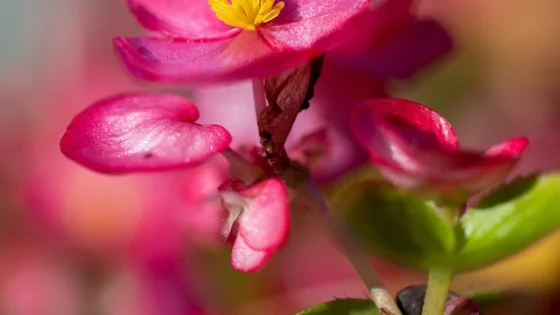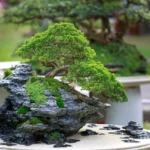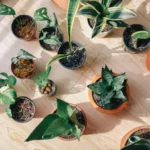Table of Contents
Introduction
Ruby Begonias make a great indoor plant, and in many climates will do well outside. They are easy to grow and will add color and texture to your garden bed.
Begonias are often sold as annual plants in cool climates, but they are actually tropical perennials and can live for several years.
With proper care, your Ruby Begonia will flower all the year. To keep your plant looking lovely there are a few basic requirements to be met, and we will look at them now.
How to Care for Your Ruby Begonia
Keep your Begonias in pots so that you can put them outside in good weather, and bring them in again as Winter approaches.
If you live in an apartment they will grow indoors all year-round. The main thing is to avoid frosts, as they are tropical in origin frosts will kill them.
What does Your Ruby Begonia Require to stay Healthy
If possible grow them in African Violet Pots, and water them from the bottom, this helps to prevent overwatering.
They will grow really well in your bathroom as they enjoy humidity. If your plant is outside, grow it beside a brick wall to remain sheltered during winter ( check climate zone).
Light Requirements
Grow your Begonia in a sunny position, with some shade availability. It is better for the Begonia to get early sun 7-9 am and then shade. Hot moist to warm moist climate zone is preferred for outdoor planting, otherwise, your Begonia will die in cold weather.
Inside, a warm partly sunny room is required, and you may need to buy a humidifier ( a good investment for many indoor Plants).
Temperature Requirements
Your Begonia plant requires warmth, but too much direct hot sunlight will burn its leaves. Indoors the Begonia should be grown in bright indirect light, keep the temperature as even as possible.
However, most houses are fairly warm all the year-round, so the Begonias will adjust to that.
Soil Requirements
The Begonia requires well-drained soil that holds its moisture. Moisture can be retained by adding peat moss to the potting mix before planting.
Outside, use some good compost or dig in some peat moss.
Humidity Requirements
Outside, the humidity will take care of itself. Indoors it can be a problem with the air conditioning unit runny constantly the air can become very dry.
Erect a pebble tray with water in it and set your pots with the Begonias in on the top and this should solve the humidity requirements. If not purchase a humidifier to keep near your plants.
How to Water
We have already established that your indoor Begonia pots should be watered from the bottom up.
Put your finger into the pot, and if the soil has dried out your plant needs watering, an African Violet pot is an ideal way of keeping your Begonias from getting too much water indoors. Water outdoor Begonias weekly.
Fertilizing Your Ruby Begonia
While the plant is growing it requires regular fertilizing during Spring and Summer. Once it is Summer fertilize your Begonia weekly using an organic flower fertilizer, and the granular form is fine.
That way you are not pouring water over the leaves. Once the fall comes, stop fertilizing until next Spring.
Extra Tips for Ruby Begonias
- If you are repotting your begonia, it should be done in Spring. This is normally done when a plant outgrows the container it is in. Choose a container one size larger and give the plant fresh potting mix. The new container should have drainage holes or alternatively get a bigger African Violet Pot.
- Regular pruning will keep your Begonia plants in shape whether they are inside or outside the house.
- The Red Ruby Begonia is hard to find, and if your local temperatures are over 40 degrees centigrade, it is too hot for the plant.
- Use some hanging baskets, in your bathroom for added color( perfect humidity). for your Ruby Begonias
Pests and Diseases
a common problem is stem and root rot called pythium rot, the leaves will fall off. Pythium rot is caused by a fungal-like organism. To avoid:
- Plant in new disease-free soil.
- Add mulch to the soil to allow good drainage.
- If growing outside, always water in the morning to allow the plant to dry off before dark.
- Water from the base.
- Always apply fertilizer to the base.
Sometimes the plant will attract caterpillars, these should be removed.
Powdery mildew may develop when the weather is too humid, this will be naturally removed by sun and heat.
Pruning
Trim and prune, in Spring and Summer, and remove any dead wood and brown leaves. If your plant is growing spindly it is not getting enough light, so cut it back or move it to a more sunny area.
Propagation
If you have a lovely Ruby Begonia you will certainly want to propagate it. If you plan to do a cutting take a 4-inch stem from your current
Begonia. Place the cutting in water, about 1″, leave the glass on a warm windowsill and wait for roots to develop. It will take around two months before your cutting is ready to go into a pot, and this will give you an exact replica of your plant.
Alternatively, you can put a stem cutting directly into a growing medium, this a more certain way to get a quick result, and then plant it into a pot to avoid the risk of root rot.
Your Ruby Begonia can also be propagated from a leaf cutting:
- Use a healthy leaf, cut the leaf off with a sharp knife from where it joins the stem.
- Slash under the leaf, along the main vein.
- Plant the leaf in a moist potting mix.
- Several young plants will start forming.
Conclusion
Your Ruby Begonia will grow about 10″ high and spread out from 10″-18″, making it the ideal indoor plant, so you will want to keep it living for a long time in optimal condition, it may live from 2-5 years, so propagate a few more to perpetuate your plant.
Photo by Adam Nieścioruk on Unsplash


